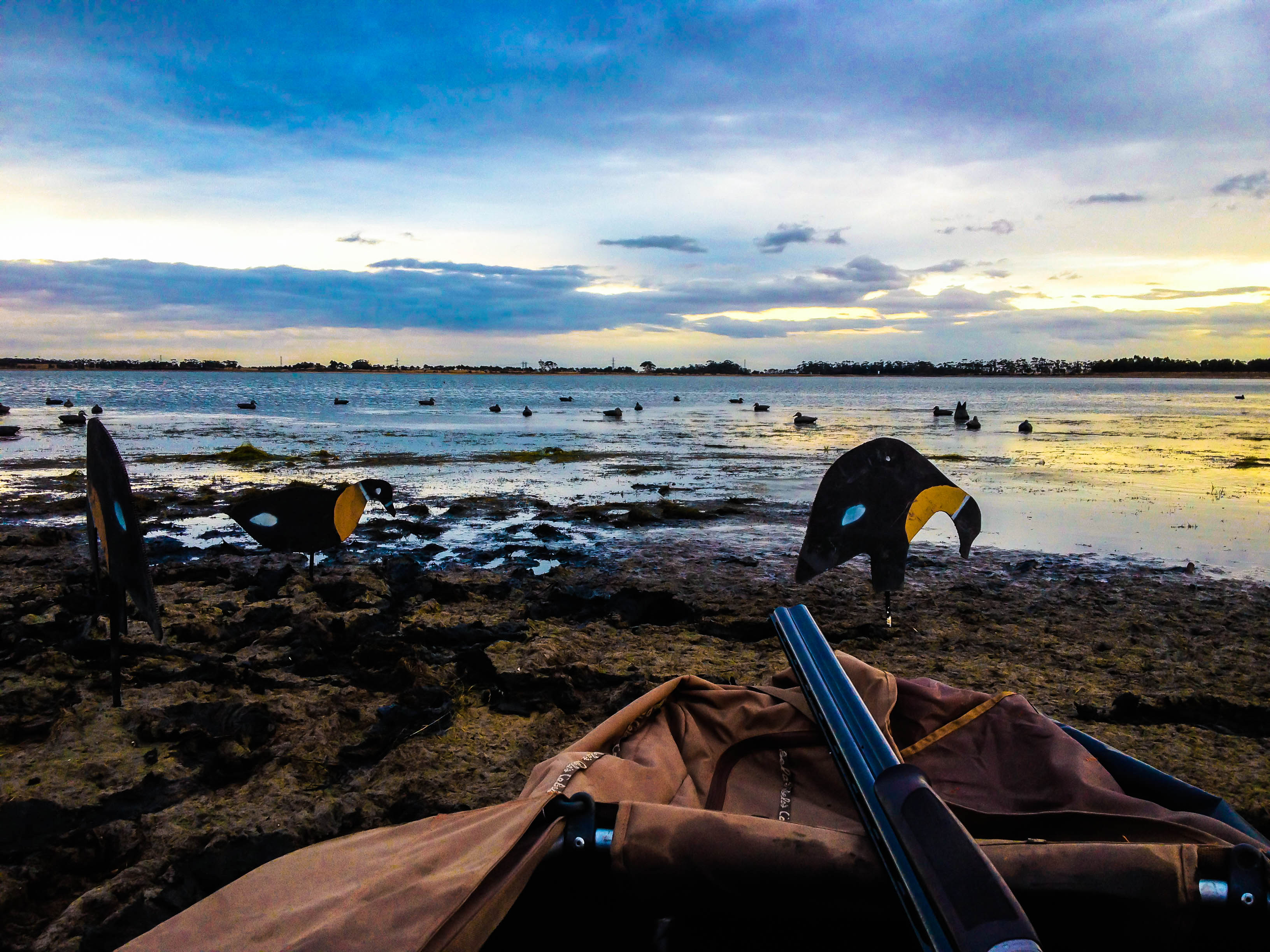Blinds and hides
 Blinds and hides can be a very effective tool for observing wildlife undetected. Both bird watchers and hunters often use these to either study an animal and its behaviour or increase their chance of harvests an animal.
Blinds and hides can be a very effective tool for observing wildlife undetected. Both bird watchers and hunters often use these to either study an animal and its behaviour or increase their chance of harvests an animal.
State Game Reserves have a long history and are one of the few public land categories that allow stakeholders to construct blinds and hides to observe waterbirds and hunt game birds.
However, in order to ensure that the conservation value and wildlife habitat of these areas is not compromised while still providing opportunities for stakeholders to erect blinds and hides, changes have been made to prescribe what native plants can be used.
These changes are contained in the Wildlife (State Game Reserves) Regulations 2024 which can be found at www.legislation.vic.gov.au
People are encouraged to use commercially available temporary and portable blinds and hides where possible. These are widely available and leave no trace in the environment.
It is an offence for people to construct blinds or hides out of any other vegetation found in a SGR that is not listed below. It is also an offence to bring vegetation from other areas into a SGR. After a blind or a hide is used, people are encouraged to dismantle and remove them.
Laws relating to blinds and hides
Under the Wildlife (State Game Reserves) Regulations 2024 there are only a certain number of native plant species that you can use to build blinds and hides in State Game Reserves.
The species are:
- Phragmites australis, a common reed found in many State Game Reserves;
- Leptospermum spp (Tea Tree); and
- Typha spp (Cumbungi/Bullrush).
A blind or hide can be built up to a maximum of 2m in height and 6m2 in floor area. It is an offence to remove, displace, deface or interfere with a blind or hide that is not yours.
The construction of blinds and hides for duck hunting is not permitted in the Discovery Bay Coastal Park, Lake Albacutya Park and the Nooramunga Marine Coastal Park.
The common reed (Phragmites australis) Phragmites australis, the common reed, is a large perennial grass commonly found in State Game Reserves across Victoria.
Phragmites can grow in large stands, known as reedbeds, which may be as much as 1 square kilometre in extent. It grows in damp ground, in standing water up to 1m in depth but rarely deeper, and can have stems up to 4m tall in certain Victorian conditions. The leaves are long for grass, 20-50cms and 2-3cm broad. It flowers in late summer.
Tea Tree (Leptospermum spp.)
Leptospermum species most likely to be found in State Game Reserves include:
Prickly Tea Tree (Leptospermum continentale)
- widespread (except the Mallee and the Alps) in heathlands and woodlands
- usually on well-drained sandy soils but also on swamp and stream margins
- 1-4m x 1-2m sized, narrow, upright prickly shrub with smooth bark
- white flowers massed along stem from October to March
Wooly Tea Tree (Leptospermum lanigerum)
- widespread, chiefly in southern Victoria, forming thickets in lowland swamps or fringing water courses
- 2-6m x 1-3m dense shrub to small erect tree with persistent fibrous bark on larger stems
- silver new growth
- massed pink and white hairy flowers from September to January
Swamp Tea Tree (Leptospermum myrtifolium)
- Found primarily in north-east Victoria
- grows in poorly drained areas of woodland and around the margins of swamps and water courses at higher altitudes
- 3m multi-stemmed shrub
- white flowers
River Tea Tree (Leptospermum obovatum)
- mainly southern Victoria along the banks of lowland watercourses and swamp margins
- 2-3m x 1.5-2m dense erect shrub
- single or paired white flowers from November to January.
Cumbungi species
Cumbungi are semi-aquatic plants growing in lakes, dams, irrigation channels, marshes and rivers where the flow is slow and dissolved nutrient levels are high. All species grow in permanent fresh or brackish water Leaves grow in bunches from below water level. The flowers of Cumbungi are distinctive in that they have a cylindrical mass of female flowers, with a spike of male flowers above (see image below).
Narrow Leaf Cumbungi (Typha domingensis)
· native species
· leaves grow to 2-3m in length
· flowers December to May.
Broadleaf Cumbungi (Typha orientalis)
· native species
· leaves grow to 2-3m in length
· flowers July to December.
Common Bullrush (Typha latifolia)
· introduced species
· leaves grow to 1m in length
· flowers December to February.
For more information, please contact Parks Victoria on 131 963.